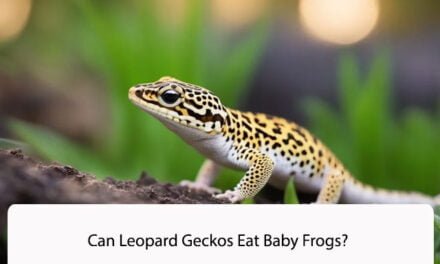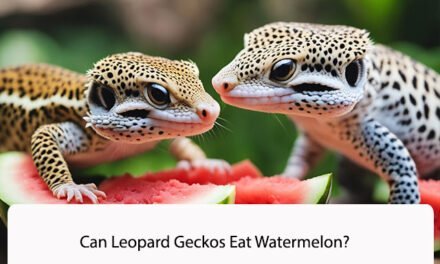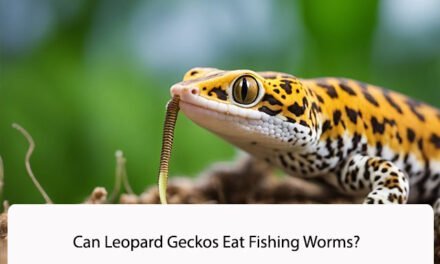Leopard geckos are one of the most popular pet reptiles due to their docile nature and unique appearance. As with any pet, providing them with a balanced and nutritious diet is crucial for their health and well-being. While live insects are a staple in their diet, many owners wonder if frozen insects can also be fed to their leopard geckos.
The answer is yes, leopard geckos can eat frozen insects. In fact, many owners prefer to feed frozen insects as they are more convenient and can be stored for longer periods of time. However, it is important to ensure that the frozen insects are of high quality and have been properly stored to maintain their nutritional value. In this article, we will explore the benefits and potential drawbacks of feeding frozen insects to leopard geckos, as well as provide tips on how to properly incorporate them into their diet.
Dietary Basics for Leopard Geckos
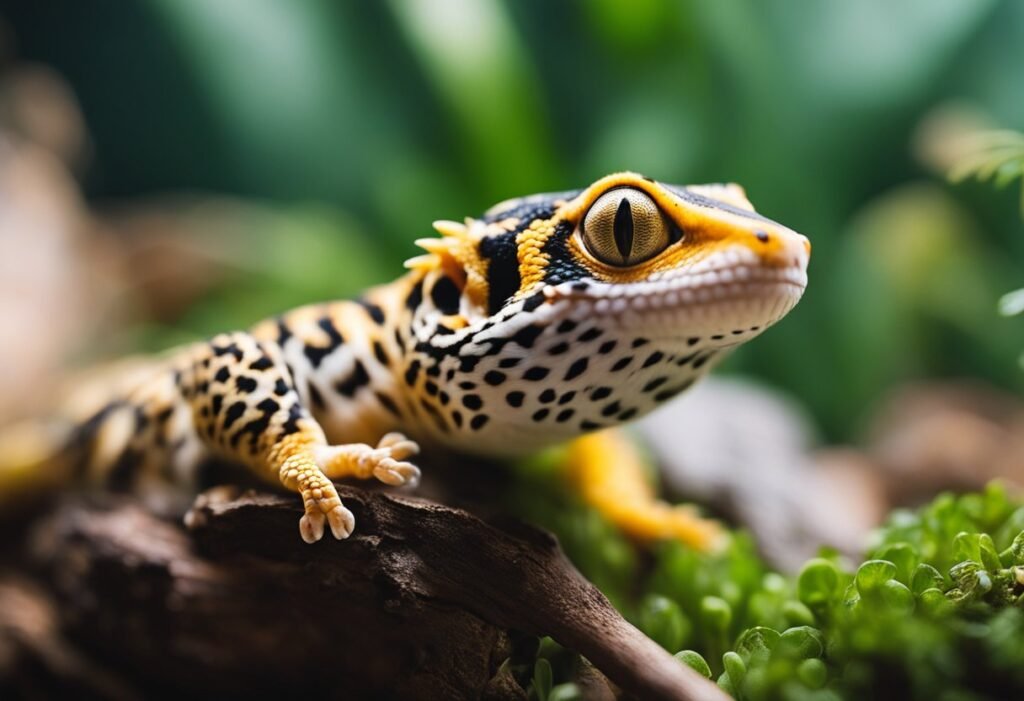
Leopard geckos are insectivorous and require a diet that is high in protein. It is important to provide them with a variety of insects to ensure they receive all the necessary nutrients. In this section, we will discuss the nutritional requirements of leopard geckos and the benefits of live prey versus frozen/thawed.
Nutritional Requirements
Leopard geckos require a diet that is high in protein and low in fat. They also require a source of calcium and vitamin D3 to maintain healthy bones. It is important to provide them with a variety of insects to ensure they receive all the necessary nutrients. Some of the insects that are suitable for leopard geckos include crickets, mealworms, waxworms, and superworms.
It is important to gut-load the insects before feeding them to your leopard gecko. This means feeding the insects a nutritious diet before feeding them to your gecko. This will ensure that your gecko receives all the necessary nutrients.
Benefits of Live Prey vs Frozen/Thawed
Live prey is generally considered to be the best option for leopard geckos. This is because live prey is more nutritious and provides a more natural hunting experience for your gecko. Live prey also helps to stimulate your gecko’s natural hunting instincts.
However, frozen/thawed insects can also be fed to leopard geckos. Frozen/thawed insects are convenient and can be stored in the freezer for later use. They are also less likely to carry parasites or diseases than live insects.
In conclusion, leopard geckos require a diet that is high in protein and low in fat. It is important to provide them with a variety of insects to ensure they receive all the necessary nutrients. Live prey is generally considered to be the best option, but frozen/thawed insects can also be fed to your gecko.
Understanding Frozen Insects
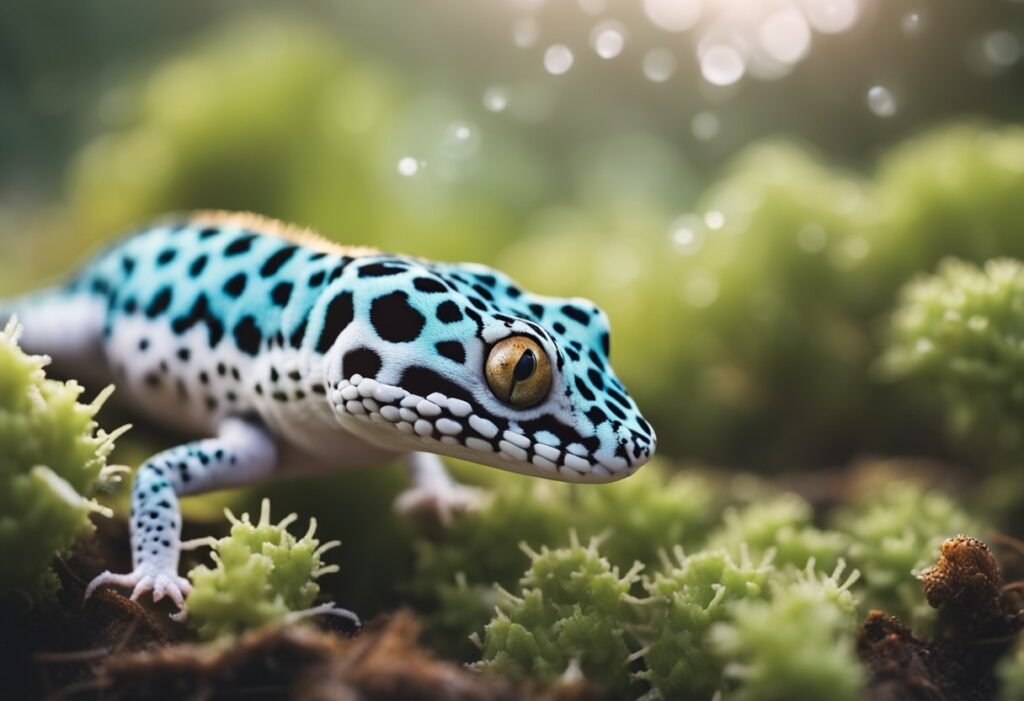
When it comes to feeding leopard geckos, frozen insects are a convenient and cost-effective option for many pet owners. However, it’s important to understand the different types of frozen insects available and the safety considerations involved in feeding them to your gecko.
Types of Frozen Insects Suitable for Leopard Geckos
Not all frozen insects are suitable for leopard geckos. It’s important to choose insects that are nutritionally appropriate for your pet. Some common frozen insects that are safe and healthy for leopard geckos to eat include:
- Crickets
- Mealworms
- Waxworms
- Superworms
- Dubia roaches
It’s important to note that some insects, such as wild-caught insects or insects that have been exposed to pesticides, may not be safe for your gecko to eat. Always purchase frozen insects from a reputable source to ensure that they are safe and free from harmful chemicals.
Safety Considerations for Feeding Frozen Insects
Feeding frozen insects to your leopard gecko can be a safe and convenient option, but there are some important safety considerations to keep in mind. Here are a few things to keep in mind when feeding frozen insects to your gecko:
- Thaw frozen insects before feeding them to your gecko. This can be done by placing the insects in a plastic bag and letting them thaw at room temperature for a few hours.
- Never feed your gecko insects that are still frozen or partially frozen. This can be dangerous and may cause digestive issues.
- Always supervise your gecko while they are eating to ensure that they are not choking or having difficulty swallowing.
- Avoid feeding your gecko insects that are too large for them to swallow. This can also cause digestive issues and may be dangerous.
By understanding the different types of frozen insects available and the safety considerations involved in feeding them to your gecko, you can ensure that your pet is getting the nutrition they need in a safe and convenient way.
Preparing Frozen Insects for Your Leopard Gecko

When it comes to feeding your leopard gecko, frozen insects can be a convenient and cost-effective option. However, it is important to properly prepare the frozen insects to ensure your gecko is receiving the necessary nutrition and to avoid any potential health issues.
Thawing Procedures
Before feeding frozen insects to your leopard gecko, it is important to properly thaw them. There are a few different methods for thawing frozen insects, including:
- Room Temperature: Simply leave the frozen insects at room temperature for a few hours until they are completely thawed. This method is convenient, but it can take longer than other methods.
- Warm Water: Place the frozen insects in a plastic bag and submerge them in warm water for 10-15 minutes. This method is faster than room temperature thawing but requires more attention to ensure the water doesn’t get too hot.
- Microwave: Place the frozen insects in a microwave-safe dish and heat them on low power for 10-20 seconds at a time until they are thawed. This method is the fastest, but it can also be the riskiest as it can overheat the insects or cause uneven thawing.
Once the insects are thawed, it is important to remove any excess moisture by patting them dry with a paper towel before feeding them to your leopard gecko.
Ensuring Proper Nutrition
While frozen insects can be a convenient option, they may not provide the same level of nutrition as live insects. To ensure your leopard gecko is receiving the necessary nutrition, it is important to offer a variety of insects and to dust them with a calcium and vitamin supplement.
Some commonly available frozen insects for leopard geckos include crickets, mealworms, and waxworms. It is important to vary the insects to provide a balanced diet and to avoid overfeeding any one type of insect.
Overall, frozen insects can be a convenient and cost-effective option for feeding your leopard gecko. By following proper thawing procedures and ensuring a varied diet with proper supplementation, you can provide your gecko with a healthy and nutritious diet.
Feeding Practices
When it comes to feeding leopard geckos, there are a few things to keep in mind. In this section, we will discuss the frequency and amount of frozen insects, as well as supplementing their diet.
Frequency and Amount of Frozen Insects
Leopard geckos are carnivores and require a diet rich in protein. Frozen insects can be a convenient and nutritious option for feeding your gecko. However, it is important to ensure that you are feeding them the appropriate amount.
We recommend feeding adult leopard geckos 3-4 appropriately sized insects every other day. Juvenile leopard geckos should be fed daily, with the amount of food adjusted based on their size and age. It is important not to overfeed your gecko, as this can lead to obesity and other health issues.
Supplementing Frozen Insects
While frozen insects can provide a good source of protein, they may not contain all of the necessary nutrients that your gecko needs. It is important to supplement their diet with calcium and other vitamins and minerals.
We recommend dusting the frozen insects with a calcium supplement before feeding them to your gecko. This will help ensure that they are getting enough calcium to support their bone health. Additionally, you may want to consider using a multivitamin supplement to provide them with other necessary nutrients.
In conclusion, feeding your leopard gecko frozen insects can be a convenient and nutritious option, as long as you are mindful of the frequency and amount of food you are providing, as well as supplementing their diet with necessary nutrients.
Observing Your Leopard Gecko’s Health
As responsible pet owners, it is important to closely monitor our leopard geckos’ health. In this section, we will discuss two key areas to observe: weight and appetite, and signs of dietary issues.
Monitoring Weight and Appetite
Leopard geckos should maintain a healthy weight and appetite. We recommend weighing your gecko regularly and keeping track of any changes. A sudden loss of weight could indicate a health issue, while a sudden increase in weight could indicate overfeeding.
In addition to monitoring weight, it is important to observe your gecko’s appetite. Leopard geckos are known for their hearty appetites, so a sudden decrease in appetite could be a cause for concern. Make sure to offer a variety of food options and monitor which ones your gecko prefers.
Signs of Dietary Issues
Leopard geckos can experience dietary issues if they are not receiving proper nutrition. Signs of dietary issues include lethargy, constipation, and diarrhea. If you notice any of these symptoms, it is important to adjust your gecko’s diet accordingly.
We recommend offering a variety of food options, including live and frozen insects. While frozen insects can be a convenient option, it is important to ensure they are properly thawed and warmed before feeding them to your gecko.
By closely monitoring your leopard gecko’s weight, appetite, and overall health, you can ensure they are happy and healthy pets.
Frequently Asked Questions
Is it safe for leopard geckos to consume freeze-dried insects?
Yes, it is safe for leopard geckos to consume freeze-dried insects. However, it is important to ensure that the freeze-dried insects are of good quality and have been stored properly. Additionally, freeze-dried insects should not be the primary source of food for leopard geckos as they lack the moisture content that live insects provide.
What types of insects should be avoided in a leopard gecko’s diet?
Leopard geckos should not be fed insects that are too large or too hard to digest, such as beetles or superworms. It is also important to avoid feeding leopard geckos insects that are toxic or have hard exoskeletons, such as fireflies or centipedes.
What are suitable alternatives to live insects for feeding leopard geckos?
Some suitable alternatives to live insects for feeding leopard geckos include freeze-dried insects, canned insects, and commercial gecko diets. However, it is important to ensure that these alternatives are nutritionally balanced and provide the necessary nutrients for leopard geckos to thrive.
How should insects be prepared for a leopard gecko’s meal?
Insects should be gut-loaded with nutritious food and dusted with calcium and vitamin supplements before being fed to leopard geckos. It is also important to ensure that the insects are appropriately sized for the leopard gecko and are not too large or too small.
What is the impact of feeding dried insects to a leopard gecko?
Feeding dried insects to a leopard gecko can be a convenient alternative to live insects, but it should not be the primary source of food. Dried insects lack the moisture content that live insects provide, which can lead to dehydration and other health issues if fed exclusively.
How can I ensure a nutritious diet for my leopard gecko during a shortage of live insects?
During a shortage of live insects, it is important to provide alternative sources of nutrition such as commercial gecko diets or canned insects. It is also important to ensure that any live insects that are available are appropriately sized and gut-loaded with nutritious food.



